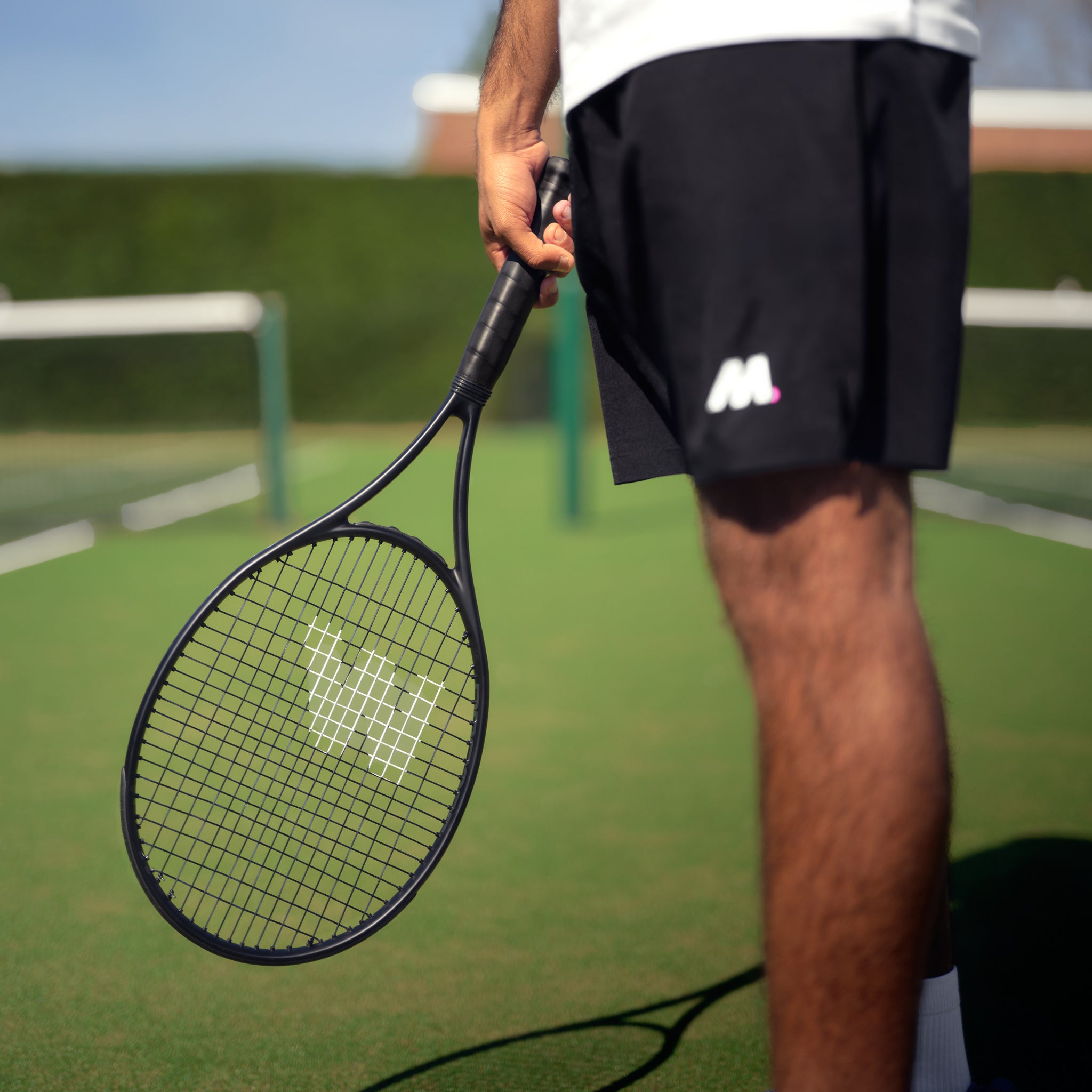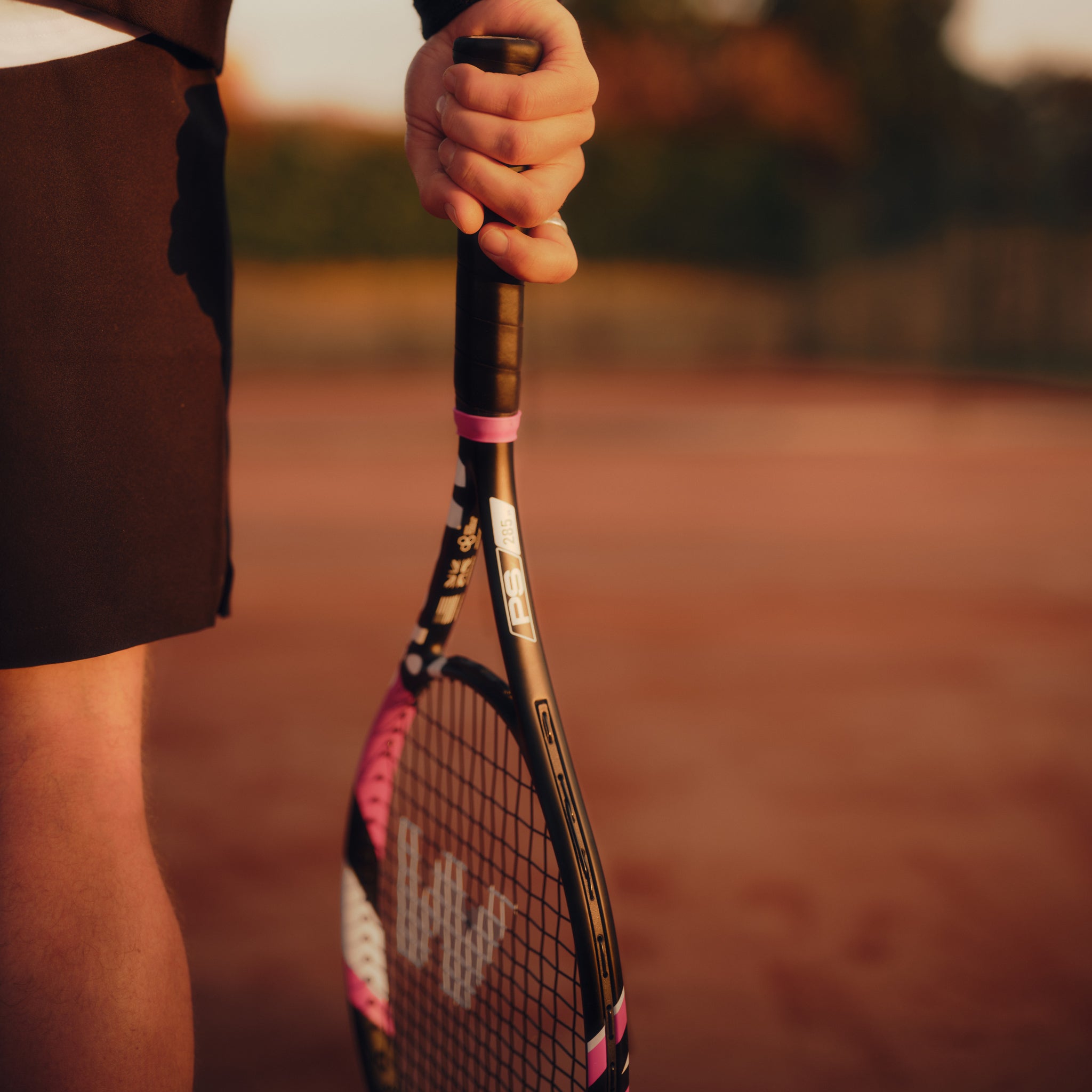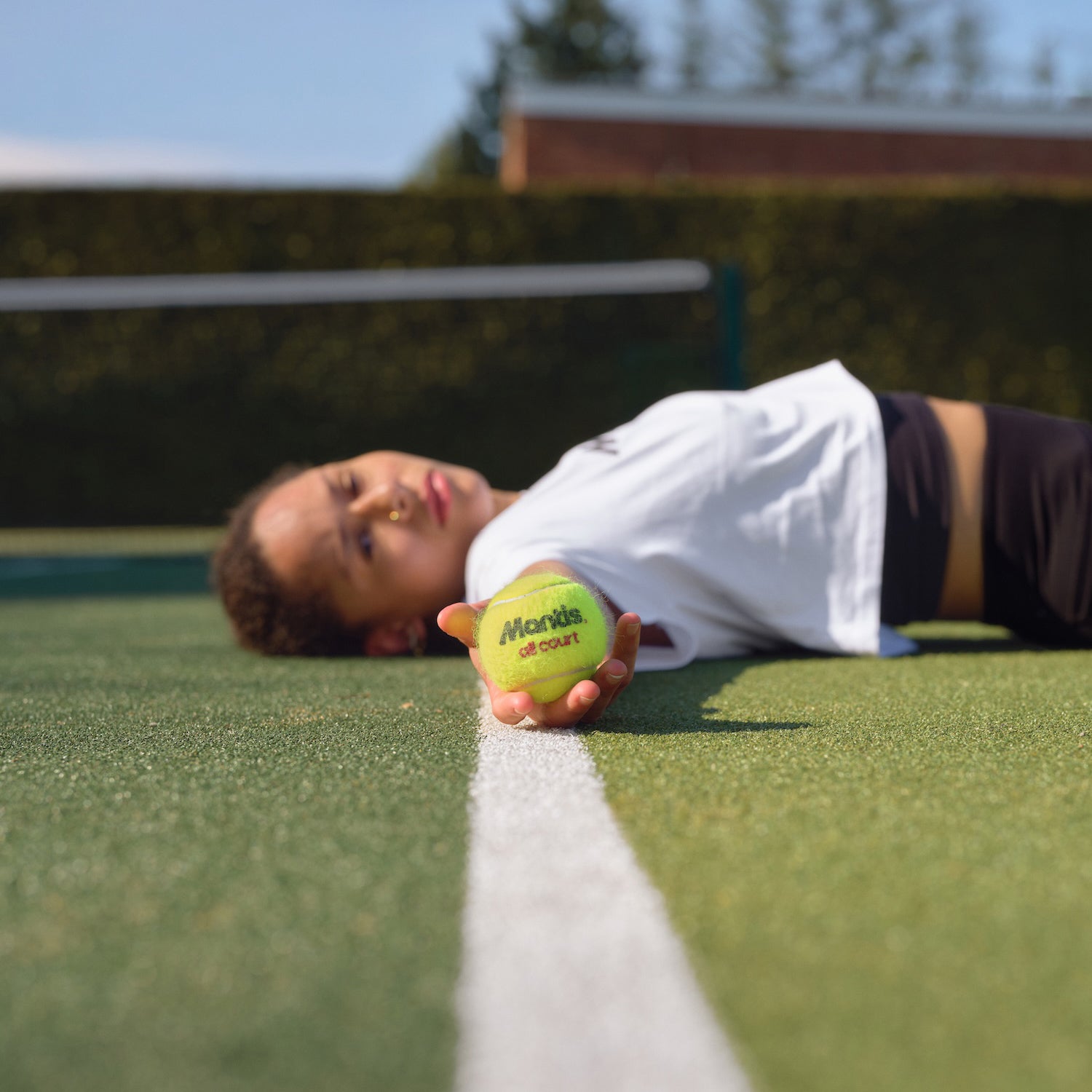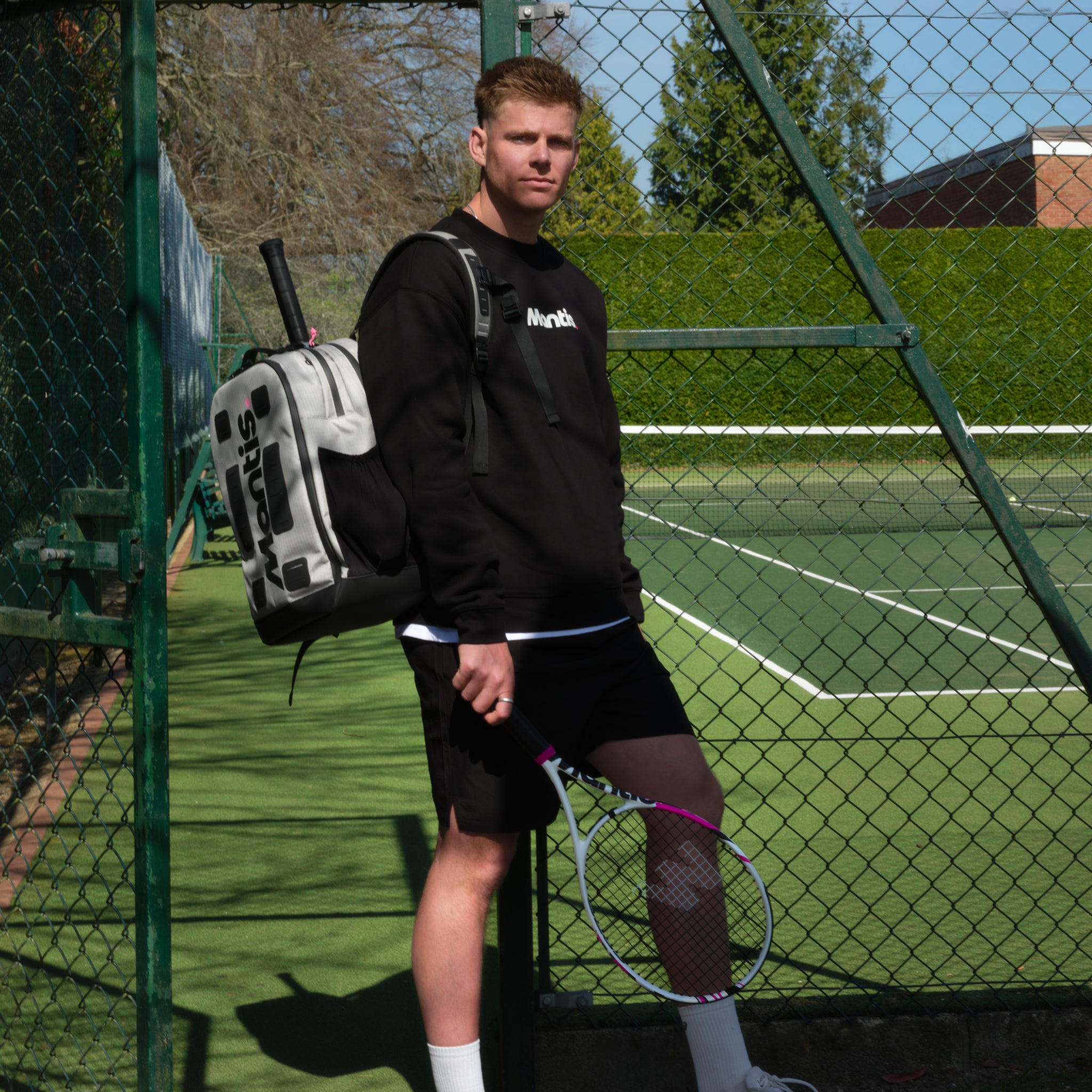
Tennis ball selection that's suited to your game is one of the quickest ways to improve. For competitive players, nothing beats the lively bounce and speed of a pressurised ball. On the other hand, if you're hitting the court for a practice session or coaching, the incredible durability of pressureless balls is hard to ignore. The best choice really comes down to your playing level, the court surface, and what you want to achieve. At Mantis, we believe that understanding your equipment is key to performance, which is why we offer a comprehensive range of Mantis tennis balls.
Understanding the Fundamentals of Tennis Ball Selection
Getting your equipment right is crucial, and that process starts with the humble tennis ball. At Mantis, we're firm believers that knowing the real differences between ball types helps players make much smarter choices. This guide breaks down the critical factors that separate one ball from another, so you can find the ones that truly suit your game.
We'll get into the details of pressurised versus pressureless balls, explain why felt quality matters so much, and look at how different balls behave on various court surfaces. Once you grasp these elements, you'll be able to make a confident decision that genuinely enhances your play, no matter your level.
Key Factors at a Glance
Before we go deep, it helps to have a quick overview of what defines a tennis ball's performance. These characteristics all work together to give you the feel, bounce, and lifespan you get out on the court.
- Pressurisation: This is the big one. It's what decides if a ball gets its bounce from internal air pressure (pressurised) or from a solid rubber core (pressureless).
- Felt Quality: The fuzzy outer layer isn't just for show; it affects how long the ball lasts, its spin potential, and the way it grips the court surface.
- Player Level: Beginners usually get more out of slower, more forgiving balls. Advanced players, however, need the consistent, responsive performance you only get from tournament-grade options.
- Court Surface: Abrasive hard courts demand tough, "extra-duty" felt. Softer surfaces like clay or indoor courts are a better match for the fluffier "regular-duty" felt.
The International Tennis Federation (ITF) is incredibly strict about the balls used in tournaments. They regulate everything from weight (56.0 to 59.4 grams) and size to bounce height, all to ensure the game is fair and consistent everywhere it's played.
This guide will give you the knowledge you need to match the ball to your game, ensuring every shot has the right bounce, speed, and durability.
Quick Guide to Tennis Ball Selection
To get you started, here’s a straightforward table that summarises the key characteristics of each ball type. Think of it as a cheat sheet to quickly point you in the right direction based on your level and where you play.
| Ball Type | Best For Player Level | Ideal Court Surface | Key Characteristic |
|---|---|---|---|
| Pressurised (Pro) | Advanced/Competitive | All Surfaces | High bounce, crisp feel, limited lifespan |
| Pressurised (Championship) | Intermediate/Club | All Surfaces | Good performance, better durability than pro |
| Pressureless | Beginner/Coaching/Practice | All Surfaces | Extremely durable, consistent but heavy feel |
| Stage Balls (Red/Orange/Green) | Junior/Beginner | All Surfaces | Slower speed and lower bounce for learning |
Hopefully, this gives you a clearer picture. Now you can use this foundation to dig deeper into the specifics of each ball and find the one that will truly work for you.
The Science Behind Pressurised Tennis Balls
Pressurised tennis balls are the undisputed choice for competitive play. They deliver that crisp, lively performance every serious player demands, and their construction is key to this. We've spent years perfecting this at Mantis, and if you're curious about the nitty-gritty, you can find out more in our article on how tennis balls are made.
At its heart, a pressurised ball is a hollow rubber sphere filled with air or nitrogen at about 12 psi above the air pressure around us. This is what gives the ball its signature pop and speed right out of the can. The iconic fuzzy felt, usually a precise blend of wool and nylon, is then carefully bonded to the core to finish it off.
This design is exactly why these are the only balls you'll see used in tournaments. The internal pressure creates a high coefficient of restitution, which is a technical way of saying less energy is lost when the ball hits your racquet or the court. The result? A faster, more responsive ball that truly rewards clean technique with powerful, precise shots.
The Dynamics of Pressure and Performance
The performance of a pressurised ball is completely tied to its internal pressure. The second you pop open a fresh can, the physics kicks in. The higher pressure inside the ball immediately starts trying to equalise with the lower atmospheric pressure outside, leading to a slow but inevitable leak. This is why a new ball feels so satisfyingly fast and crisp.
But that’s also its greatest weakness. The fantastic performance is temporary. As that internal pressure drops, the ball gets softer, its bounce fades, and it starts to feel sluggish and heavy off the strings. For competitive players, a can of balls might only be good for a single match before the drop-off is too noticeable for high-level play.
The very thing that makes a pressurised ball play so well—its internal pressure—is also the reason it will eventually go flat and need replacing. It’s a classic trade-off between peak performance and a limited lifespan.
The global demand for tennis balls is climbing, with projections showing the market could reach $2.66 billion by 2033. This growth is overwhelmingly driven by the appetite for high-performance pressurised balls used on the competitive circuit, cementing their place as the serious player's choice.
Maximising Longevity
While their lifespan is naturally limited, you can take a few simple steps to keep your pressurised balls playing well for longer. It really all comes down to proper storage.
- Avoid Extreme Temperatures: Never leave your balls in a hot car boot. Heat makes the gas molecules inside move faster, which speeds up how quickly they escape through the rubber core.
- Keep Them Dry: A damp ball is a dead ball. Moisture ruins the felt, making it heavy, less aerodynamic, and far less enjoyable to play with.
- Use Pressurised Storage: For practice sessions, a "ball saver" canister can make a real difference. These devices maintain the pressure around the balls between hits, helping to extend their playable life.
These tips won't make them last forever, but they can certainly help you squeeze a few more quality hitting sessions out of a can.
The Impact of Altitude and Climate
The environment you play in has a massive effect on how a pressurised ball behaves. Take altitude, for instance. Up in the mountains, the air pressure is lower, which increases the pressure difference between the inside and outside of the ball. This makes it fly faster and bounce higher than it would at sea level.
To combat this, manufacturers like us at Mantis produce special high-altitude balls that have a slightly lower internal pressure from the start. This helps deliver a consistent playing experience no matter where you are. Temperature also plays its part; balls are always livelier on warm days and feel a bit dead in the cold. Understanding these little variables is part of the game and helps you choose the right gear for the day.
Why Pressureless Tennis Balls Dominate the Practice Court
For anyone running drills—from coaches and academies to serious recreational players—pressureless tennis balls are the undisputed workhorse of the practice court. They offer a fantastic mix of durability and consistency, which is why we at Mantis see them as an essential part of the game. Unlike standard pressurised balls that depend on internal air for their bounce, these get their spring from a solid rubber core.
This core design principle is what makes all the difference: they never go ‘flat’. Their longevity is easily their biggest selling point, making them a seriously smart investment for filling a ball machine or a coaching basket. A can of pressurised balls can feel dead after just one hard-hitting session, but a set of pressureless balls will hold up for months of regular play. This is a huge plus for clubs and players keeping an eye on their budget. If you're keen on more expert takes on tennis gear, racketbusiness.com is a great resource for equipment analysis.
The Trade-Off: A Heavier Feel for Longevity
The solid core construction means pressureless balls feel noticeably heavier and firmer when you strike them. For players looking to build strength and endurance, this can actually be a major advantage. That extra weight forces you to put more into each shot to generate pace and depth, turning your drill session into a subtle form of resistance training.
Of course, that heavier feel isn't for everyone. If you're an advanced player who thrives on the crisp, lively response of a fresh pressurised ball, a pressureless one might feel a bit sluggish or even "dead" off the strings. The ball seems to linger on the racquet face for a split second longer, which can throw off the timing for someone with highly refined strokes.
Here's the bottom line for players: the heavier impact of a pressureless ball is brilliant for building arm strength during drills, but it doesn't quite replicate the feel of a real match. That makes them perfect for practice but less than ideal when you're warming up for a tournament.
Understanding this distinction is key to picking the right ball for your training goals. If you're focused on high-volume repetition and physical conditioning, the pressureless ball is an outstanding choice.
A Different Kind of Performance Evolution
One of the most fascinating things about pressureless balls is how they change over time. Their performance arc is the complete opposite of a pressurised ball. Instead of starting out lively and slowly losing their bounce, pressureless balls actually begin their life at their firmest and least bouncy.
As you hit them over and over, the felt cover wears down. This exposes more of the rubber core to the impact, and the ball gradually becomes bouncier. It's a slow process, which means you get a pretty consistent playing experience over many weeks, or even months.
- Initial Play: The ball feels firm, heavy, and has a lower, more predictable bounce.
- Mid-Life: As the felt thins out, the ball gets a little lighter and more responsive.
- Late-Life: Once most of the felt is gone, the ball becomes much bouncier and faster, sometimes to the point where it's hard to control.
This predictable journey allows coaches and players to manage their ball supply without any guesswork. They know exactly what to expect from their basket of pressureless balls, ensuring drills run smoothly without constantly cracking open new cans. For anyone prioritising extreme durability and predictable training performance, the pressureless ball is still king.
Choosing between pressurised and pressureless balls is one of the most fundamental decisions a player makes. It's not just about how long they last; it's about how they feel, how they play, and what they do for your game. Here at Mantis, we understand these nuances. Let's break down what really separates these two types of balls, looking beyond the obvious differences.
We'll move past the simple "one is bouncy, one is not" and get into the real-world performance dynamics. From the lively pop of a fresh can of pressurised balls to the reliable thud of a pressureless ball after months in the hopper, our goal is to give you the clarity you need to pick the right ball for the right situation.
Bounce Consistency and Predictability
The most noticeable difference, and arguably the most important, is the bounce. A brand-new pressurised ball is the gold standard for a reason. It has a high, lively, and incredibly consistent bounce right out of the pressurised can, which is exactly what you need for competitive play where timing is everything.
The catch? That peak performance is fleeting. As soon as the can is opened, the internal pressure starts to escape. With every hit, a little more pressure is lost, and the bounce gets lower and less responsive. A can of balls perfect for a Saturday match can feel disappointingly 'dead' by a Tuesday practice session.
Pressureless balls are the complete opposite. Their bounce comes from the solid rubber core, not trapped air. They start out feeling a bit firmer and have a slightly lower bounce, but here's the key: they stay that way. For months, you get a reliable, predictable response, which is perfect for drills, coaching, and long practice sessions where you just need consistency.
Feel and Impact on the Racquet
How a ball feels coming off the strings is a massive factor for most players. Pressurised balls are known for their light, crisp, and responsive feel. When you hit a clean shot, they compress and spring off the strings, giving you instant feedback and a real sense of connection that's crucial for control and finesse.
This responsiveness is what makes them the go-to for players who rely on touch and spin to build their points. The ball feels 'alive' and rewards good technique with precision and satisfying pop.
Pressureless balls have a very different feel. They're heavier and denser, which means the impact is firmer and less forgiving. This isn't necessarily a bad thing; for training, it can actually help you build strength by forcing you to generate more of your own power. However, it definitely lacks that refined touch advanced players crave for match play.
Ultimately, it comes down to what you're doing. For a competitive match, the crisp feedback of a pressurised ball is vital for control. For banging out a thousand forehands in a drill, the solid, consistent impact of a pressureless ball is exactly what you need to build rhythm.
Spin Potential and Control
Spin is the name of the game in modern tennis, and your choice of ball makes a huge difference. The softer rubber and more pliable felt on a pressurised ball allow it to sink into the racquet strings for a fraction of a second longer.
This extra 'dwell time' is what allows players to really brush up on the ball and generate massive amounts of topspin or slice. You can shape your shots with more control, hit with higher net clearance, and create those aggressive, dipping shots that win points.
Because they are harder and firmer, pressureless balls just don't offer the same spin potential. They tend to skid off the strings a bit more quickly, making it much harder to create heavy rotation. They're perfectly fine for hitting flat or with a bit of spin, but they won't give you the tactical advantage if your game is built around topspin.
The chart below gives a good idea of how long you can expect different pressurised balls to last under normal playing conditions.
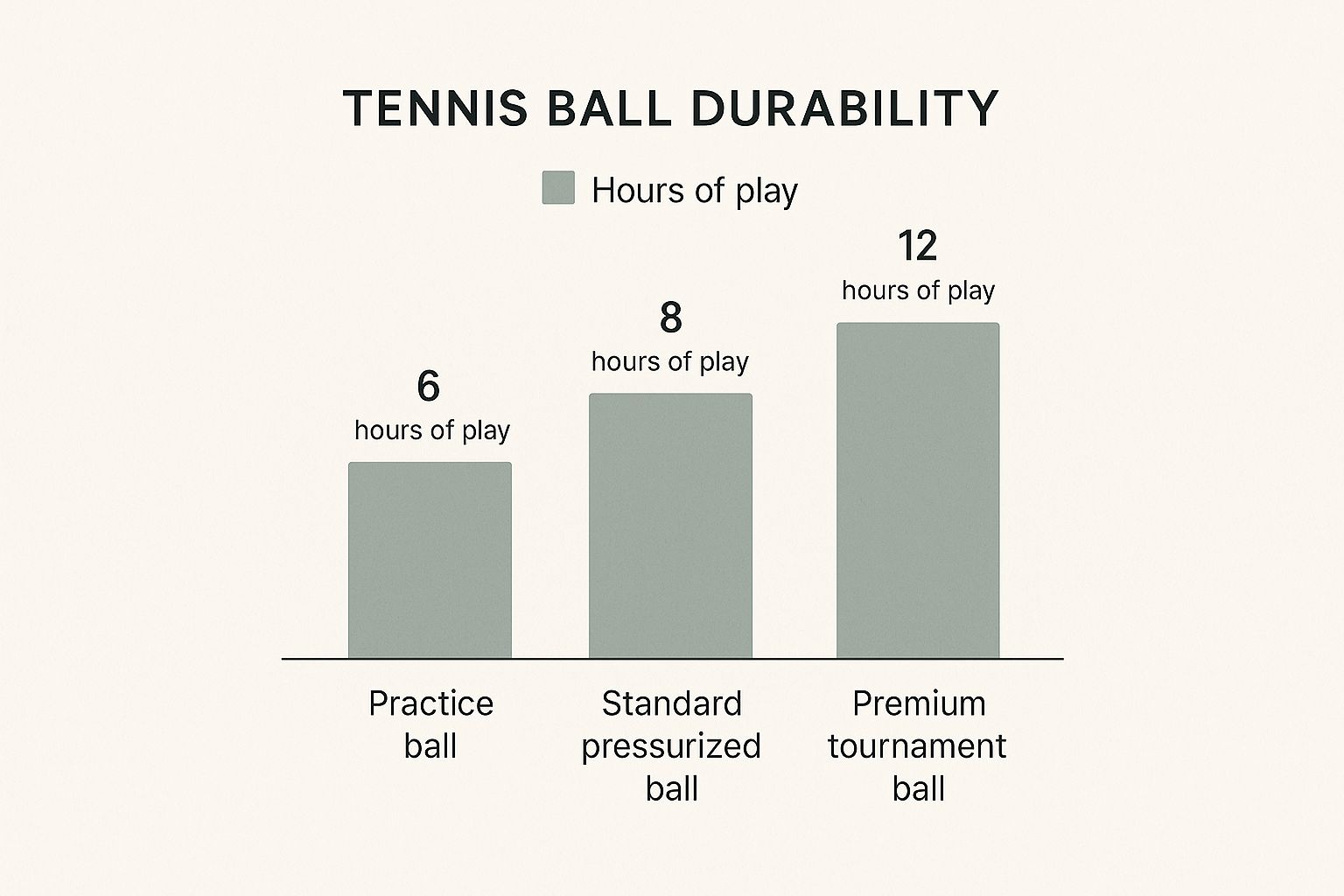
As you can see, investing in premium tournament balls can give you up to 50% more quality playing time compared to standard balls. For serious players, that extra performance is often worth it.
To help you decide, let's put the key differences side-by-side. This table offers a straightforward look at what you can expect from each type of ball.
Pressurised vs Pressureless: A Detailed Breakdown
| Feature | Pressurised Balls | Pressureless Balls |
|---|---|---|
| Initial Bounce | High, lively, and consistent straight from the can. The competitive standard. | Lower and firmer. Feels 'heavy' at first compared to pressurised balls. |
| Durability | Short-lived. Performance degrades as internal pressure is lost. | Extremely durable. The felt wears out before the bounce does. |
| Feel & Impact | Light, crisp, and responsive. Provides excellent feedback on contact. | Heavier and firmer. A 'thud' sensation that requires more player-generated power. |
| Spin Potential | Excellent. The softer core 'bites' into the strings for maximum spin. | Limited. The harder core makes it difficult to generate heavy spin. |
| Best For | Competitive matches, tournament play, and serious practice sessions. | Training, coaching baskets, ball machines, and recreational hitting. |
| Cost | Lower initial cost per can, but higher long-term cost due to frequent replacement. | Higher initial cost per ball, but much better long-term value due to longevity. |
Ultimately, the right choice depends entirely on your needs. For the serious player stepping onto the court for a match, nothing beats a fresh can of pressurised balls. For a coach filling a hopper, the durability and value of pressureless balls are unmatched.
Long-Term Value and Cost-Effectiveness
When you look at your budget, the choice becomes very clear. Pressurised balls are a consumable. For anyone playing regularly, the cost adds up, as you'll want a new can every few matches to keep the performance level high. Their value isn't in their lifespan; it’s in providing peak performance when it counts most.
Pressureless balls, on the other hand, are a long-term investment. The upfront cost might be a bit more, but their incredible durability means a single set can last for months, sometimes an entire season of practice. For coaches, academies, and anyone with a ball machine, they are the undisputed champion of value, drastically cutting down on replacement costs.
Matching Tennis Balls to Your Court and Skill Level
Choosing the right equipment goes far beyond just your racquet. The way a tennis ball interacts with the court surface is a massive piece of the performance puzzle. Here at Mantis, we help players find the perfect tennis balls for their game, making sure every match is played at its best. To get a head start, especially if you play on abrasive surfaces, have a look at our guide on the best hard court tennis balls.
The court you play on really dictates how a ball is going to behave. Not all felt is created equal, and matching the ball's outer layer to the court is absolutely crucial for both playability and durability. This is every bit as important as matching the ball type to your own skill level.
Adapting to Different Court Surfaces
Hard courts are notoriously abrasive and demand a ball that's built to withstand serious friction. This is where extra-duty felt balls truly shine. Their felt has a thicker, more durable weave of wool and nylon that resists fluffing up too quickly. The result? A consistent flight path and bounce, even after hours of hard-hitting play.
On the other hand, softer surfaces like clay or indoor carpet courts call for regular-duty felt. This felt is a bit thinner and less dense, a design choice that stops the ball from picking up too much court material, like loose clay particles. If you use an extra-duty ball on a clay court, you'll soon find yourself in a slow, heavy, and unpredictable game as the felt gets completely clogged.
The principle here is simple alignment. An extra-duty ball on a hard court gives you durability. A regular-duty ball on a soft court keeps play clean and consistent. Mismatching them just leads to poor performance and a very short lifespan for the ball.
Tailoring Ball Choice to Player Ability
A player's skill level is the other critical factor. While seasoned competitors need the speed and lively response of high-performance pressurised balls, beginners often find that a different approach works much better for them.
For anyone just starting out, slower balls can make a world of difference. Stage balls (Red, Orange, and Green) are specifically designed with lower compression. They travel slower and bounce lower, which gives learners more time to set up their shots and develop good technique. That controlled pace is brilliant for building confidence and making rallies more fun right from the beginning.
As players improve, their needs naturally change. Intermediate and club players need the reliable, consistent performance of standard pressurised balls for their matches. At the top end, advanced and tournament-level competitors require the crisp feel and precision of premium, pro-level balls to properly execute high-spin shots and powerful serves.
Real-World Scenarios
To bring this all to life, let’s think about two very different players:
-
The Weekly Club Player: This person plays a couple of times a week down at the local hard courts. Their best bet is a durable, pressurised championship-level ball with extra-duty felt. It offers a fantastic balance of performance for their matches but won't degrade as quickly as a premium tournament ball, giving them much better value for money.
-
The Competitive Tournament Player: This player is competing regularly and needs peak performance, no compromises. They should be using premium pressurised balls with the correct felt for whatever surface the tournament is on. For them, the feel, spin potential, and consistent bounce from a fresh can are non-negotiable for executing their game plan under pressure.
Interestingly, looking at player habits can give us some wider insights into the market. In the United Kingdom, for instance, the number of tennis balls sold has shown only modest growth since the lockdowns, rising by just 4% compared to 2020 and still sitting 11% lower than 2019 figures. This data hints that while many people who picked up a racquet during the pandemic are still playing, they might not be getting on court quite as often now.
This is exactly why we at Mantis offer such a broad range of balls. We look after the club player who needs durability, the coach who needs a basket of reliable pressureless balls, and the tournament player who demands precision. At the end of the day, the best tennis ball is simply the one that perfectly aligns with where you play, and how you play.
Our Final Thoughts from the Mantis Team
Picking the right tennis ball is one of those small details that makes a huge difference to your game and how much you enjoy being on court. To help you make that final decision, we’ve boiled down our key insights. Here at Mantis, our advice always comes down to matching the right gear to the right situation, so you get the most out of every single match.
Ultimately, your choice should hinge on what you’ll be using the balls for. Think about your playing style, the court surface, and your budget, and you'll be able to pick the perfect ball with confidence.
For the Competitive Player
If you're playing competitive matches or seriously preparing for a tournament, there’s really no debate: you need high-quality pressurised balls. Their lively bounce, crisp feel, and fantastic spin potential are non-negotiable for high-level play where every shot counts.
Yes, they don't last as long, but the performance they deliver is simply on another level. We always recommend cracking open a fresh can for every important match. It ensures consistency and gives you the best possible shot at winning – it's the standard for a reason.
For Practice, Coaching, and Ball Machines
On the other hand, if you're a coach, a beginner, or someone who spends a lot of time with a ball machine, pressureless balls are the smart, logical choice. Their incredible durability and long-term value for money make them an essential training tool.
They'll give you a consistent, predictable bounce for months on end, which is exactly what you need for drills and repetition. That slightly heavier feel can also help build strength, making them a wise investment for developing players and anyone clocking up high-volume hitting sessions.
The UK's lawn-tennis ball market has shown notable stability recently, with forecasts suggesting a consistent per capita market size of around $0.68 USD through 2028. This reflects a steady, reliable demand, underscoring the importance of making informed choices to find value in a stable market. You can learn more about these market trends to understand purchasing patterns.
Our final piece of advice is simple: let your objective guide your choice. Use pressurised balls when performance is everything, and lean on the workhorse durability of pressureless balls for practice. Taking this balanced approach won't just improve your game; it'll give you the best value for your money.
Your Tennis Ball Questions, Answered
Picking the right tennis ball can feel a bit overwhelming, but it doesn't have to be. Here at Mantis, we want to clear up the confusion and give you the confidence to choose the best gear for your game. We'll tackle some of the most common questions players ask.
How Long Do Pressurised Tennis Balls Last?
The honest answer? It really depends on how hard you're hitting. For a serious, competitive player, a fresh can of balls might only be good for one tough match—think 2-3 hours of intense play. After that, you'll feel a definite drop in performance.
If you're just having a friendly knockabout, you could probably stretch a can over a couple of sessions within a week or two. Just be aware that after that first hour, they'll start to lose that lively pop as the internal pressure gradually leaks out.
Are There Different Tennis Balls for High Altitudes?
Absolutely. High-altitude balls are a must if you're playing anywhere above 1,200 metres (around 4,000 feet). At that elevation, the air is thinner, which makes standard balls feel like they're flying off your strings and bouncing way too high.
To fix this, high-altitude balls are made with less internal pressure. This clever adjustment brings their performance back down to earth, giving you the control and predictable bounce you'd expect at sea level. It’s a small change that has a huge impact on the game.
What Is the Difference Between Extra Duty and Regular Duty Felt?
The type of felt on a ball is all about matching it to the court surface you're playing on.
-
Extra-duty felt is your go-to for hard courts. It has a thicker, more durable weave with a higher wool and nylon content. This helps it stand up to the abrasive surface without fluffing up too quickly.
-
Regular-duty felt is designed for softer courts, like clay or indoor carpet. Its thinner construction is great because it doesn't pick up as much of the loose court material, which would otherwise make the ball heavy and sluggish.
Getting the felt right means the ball will play consistently and last a whole lot longer.
At Mantis, we’re firm believers that the better you understand your equipment, the better you'll play. Take a look at our complete collection of performance tennis gear and find exactly what you need.
